
Mortellaro's Nursery
Shrubs, trees, ground covers, native plants, and seasonal color
Wholesale Only
Click on any of the alpha indexes below to view the corresponding lists of plants.
The default list is displayed alphabetically by common name for all plant types. You can view the plants by clicking on the Scientific Name or limit the plant type by using the drop down.
Plants actively being grown for the current season are shown -- selecting Discontinued Items will show plants we have offered in the past.
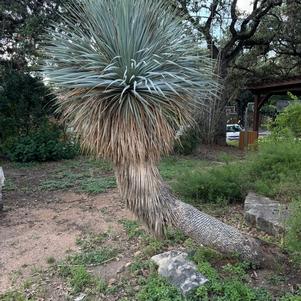
|
Beaked YuccaBotanical Name: Yucca rostrata
Yucca rostrata, commonly known as Beaked Yucca, is a striking, architectural plant that thrives in Texas landscapes. This Texas native features a single or multi-trunked form topped with a dense crown of narrow, blue-green leaves that radiate symmetrically, giving it a refined, sculptural appearance. As a slow-growing species, it gradually develops a trunk over time, reaching heights of 10 to 15 feet with a spread of 4 to 6 feet at maturity. Its drought tolerance and low maintenance needs make it an excellent choice for xeriscaping and arid landscapes. This yucca prefers full sun and thrives in well-drained, alkaline to neutral soils, including rocky and sandy terrains. It is highly drought-resistant, requiring minimal watering once established, and it can withstand Texas’s extreme heat without issue. Beaked Yucca is also deer-resistant and non-toxic, making it a safe choice for landscapes shared with pets and wildlife. In late spring to summer, it produces tall flower stalks with clusters of creamy white blooms, which attract pollinators like bees and hummingbirds. Yucca rostrata is an ideal focal point in desert gardens, modern landscapes, and rock gardens, where its bold form and striking foliage stand out. It also works well in container plantings, mass groupings, and as an accent plant in dry or low-water-use areas. When planting multiple specimens, allow at least 4 to 6 feet of spacing to accommodate its mature spread and avoid overcrowding. This plant is cold-hardy to USDA Zones 5-11, making it one of the more resilient yucca species. In Texas, it can withstand occasional freezes, but in regions prone to extreme winter conditions, wrapping the crown with burlap or frost cloth can help protect the growing point from excessive moisture or ice damage. Otherwise, Yucca rostrata requires little winter care, and dead leaves can be pruned to maintain a tidy appearance. [ More Info ]
|
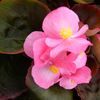
|
BegoniaBotanical Name: Begonia x semperflorens-cultorum
Cocktail Series Begonia (Begonia semperflorens) is a compact, sun-tolerant annual known for its lush, waxy foliage and abundant blooms in shades of red, pink, and white. The Cocktail series, which includes cultivars such as Gin, Vodka, and Whiskey, is specially bred for heat resistance, drought tolerance, and continuous blooming throughout the warm months. These begonias are ideal for flower beds, borders, containers, and mass plantings, bringing lasting color to Texas landscapes. Thriving in full sun to partial shade, Cocktail Begonias perform best in well-drained, rich soil but can tolerate a range of soil conditions, including slightly acidic to neutral pH. Once established, they are drought tolerant, though regular watering encourages lush growth and more prolific blooming. Their thick, glossy leaves help them retain moisture and withstand heat better than many other begonia varieties. Cocktail Begonias grow to a mature height of 6-12 inches with a spread of 10-12 inches, forming dense, bushy mounds of color. When planting in groups, spacing of 8-12 inches apart ensures full, even coverage. Compared to other begonia varieties, the Cocktail series stands out for its improved heat tolerance and compact, uniform growth. In USDA Zones 9-11, Begonias may survive as short-lived perennials, but they are generally treated as annuals in Texas gardens. While they do not tolerate frost, they can be overwintered indoors in containers. To promote continuous blooming, deadheading spent flowers is recommended. 2025 Cultivars Begonia semp. 'Cocktail Gin' (Rose Pink) [ More Info ]
|
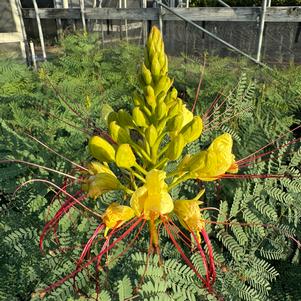
|
Bird-of-ParadiseBotanical Name: Caesalpinia gilliesii
Hardy Bird of Paradise (Caesalpinia gilliesii, not Strelitzia reginae) is a popular choice for Texas landscapes due to its vibrant yellow flowers with long red stamens and fern-like foliage. Typically, this deciduous shrub needs to be given location consideration as it reaches an average height and spread of about 6-9 feet. It is known for its moderate growth rate and can be pruned to maintain a more compact form if desired. Yellow Bird of Paradise (Caesalpinia gillesii) is an elegant, drought-tolerant shrub or small tree known for its fine, feathery foliage and striking yellow flowers accented by long, dramatic red stamens. It is native to South America but has adapted well to Texas landscapes, particularly in regions with hot, dry conditions. This plant thrives in full sun and well-drained soils, making it a popular choice for xeriscaping or low-water-use gardens. Though not a Texas native, its resilience and unique appearance make it a standout addition to landscapes across the state. Deer tend to avoid it, and it is considered non-toxic to pets and humans. Yellow Bird of Paradise is often compared to its relative, Pride of Barbados (Caesalpinia pulcherrima). While both plants share a similar fern-like foliage and heat-loving nature, they differ in flower color and hardiness. Yellow Bird of Paradise blooms feature bright yellow petals with striking red stamens, while Pride of Barbados showcases vibrant orange and red blossoms. Additionally, Yellow Bird of Paradise is more cold-hardy, tolerating temperatures down to around 15°F with minimal damage, whereas Pride of Barbados may suffer dieback in anything below 25°F. Yellow Bird of Paradise blooms from spring through early fall, often starting earlier in the season than Pride of Barbados, which typically requires sustained heat to flower vigorously. This hardy shrub grows 6 to 10 feet tall and wide, with a naturally open and airy form that lends itself well to informal plantings or as a backdrop in perennial beds. To maintain a more compact shape, light pruning can be performed in late winter or early spring. When planting multiple specimens, space them 6 to 10 feet apart to allow for their mature size. Although this plant tolerates drought conditions once established, occasional deep watering during extended dry periods will promote more prolific blooming. Yellow Bird of Paradise propagates readily from seeds, which can self-sow in ideal conditions. While its hardiness and ease of growth make it a versatile plant, it can sometimes spread beyond its intended area. To prevent unwanted growth, deadhead spent flowers and collect seeds promptly. [ More Info ]
|

|
Blue Fescue GrassBotanical Name: Festuca glauca 'Elijah Blue'
[ More Info ]
|
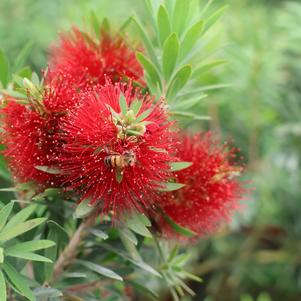
|
Bottlebrush, DwarfBotanical Name: Callistemon citrinus 'Little John'
The Bottlebrush Tree originally hails from Australia, where it thrives in its native habitat. Its introduction to Texas landscapes has made it a beloved ornamental plant cherished for its vibrant blooms and lush foliage. Notably, when the foliage of the Bottlebrush Tree is crushed, it releases a pleasant citrus aroma, adding to its allure in the garden. 'Little John' Bottlebrush is a dwarf cultivar that produces striking crimson-red flower spikes that are more dense than the regular bottlebrush. The vibrant blooms start in late spring and early summer, attracting pollinators like bees and butterflies. Each flower spike consist of numerous tiny individual flowers densely packed. Blooms last for several weeks to months. While the dwarf bottlebrush adapts well to the diverse climates of Texas, gardeners should be mindful of its soil preferences, as it tends to prefer slightly acidic soil conditions. Additionally, providing fertilizer and mulch can promote healthy growth and enhance its overall vigor. However, in regions of central and north Texas where freezing temperatures are common, prolonged exposure to cold can damage its foliage and stems, and possibly killing it. A thick layer of mulch can ensure it returns after a heavy freeze, however it is very slow growing and will take years to reach the mature height again. [ More Info ]
|
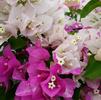
|
BougainvilleaBotanical Name: Bougainvillea x 'White Touch of Pink'
Bougainvillea is one of the most captivating blooming vines used around Texas. Native to South America, these thorny woody vines grow up to 30 feet long in warm climates; semi-evergreens that drop their leaves in colder climates. Popular in hanging baskets or containers so that they can be protected in the colder regions as freezing temperatures can kill them. [ More Info ]
|
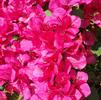
|
Bougainvillea, Barbara Karst (Red)Botanical Name: Bougainvillea x 'Red Barbara Karst'
Bougainvillea is one of the most captivating blooming vines used around Texas. Native to South America, these thorny woody vines grow up to 30 feet long in warm climates; semi-evergreens that drop their leaves in colder climates. Popular in hanging baskets or containers so that they can be protected in the colder regions as freezing temperatures can kill them. [ More Info ]
|
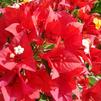
|
Bougainvillea, FlameBotanical Name: Bougainvillea x 'Flame'
Bougainvillea is one of the most captivating blooming vines used around Texas. Native to South America, these thorny woody vines grow up to 30 feet long in warm climates; semi-evergreens that drop their leaves in colder climates. Popular in hanging baskets or containers so that they can be protected in the colder regions as freezing temperatures can kill them. [ More Info ]
|

|
Bougainvillea, Juanita Hatten (Red)Botanical Name: Bougainvillea x 'Juanita Hatten'
Bougainvillea is one of the most captivating blooming vines used around Texas. Native to South America, these thorny woody vines grow up to 30 feet long in warm climates; semi-evergreens that drop their leaves in colder climates. Popular in hanging baskets or containers so that they can be protected in the colder regions as freezing temperatures can kill them. Juanita Hatten cultivar is one very similar to Barbara Karst, however the new foliage has a tinge of variegation that goes away as they mature. [ More Info ]
|
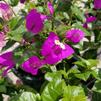
|
Bougainvillea, PurpleBotanical Name: Bougainvillea x 'Flame'
Bougainvillea is one of the most captivating blooming vines used around Texas. Native to South America, these thorny woody vines grow up to 30 feet long in warm climates; semi-evergreens that drop their leaves in colder climates. Popular in hanging baskets or containers so that they can be protected in the colder regions as freezing temperatures can kill them. [ More Info ]
|
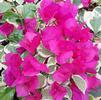
|
Bougainvillea, Variegated VickieBotanical Name: Bougainvillea x 'Variegated Vickie'
Bougainvillea is one of the most captivating blooming vines used around Texas. Native to South America, these thorny woody vines grow up to 30 feet long in warm climates; semi-evergreens that drop their leaves in colder climates. Popular in hanging baskets or containers so that they can be protected in the colder regions as freezing temperatures can kill them. [ More Info ]
|
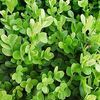
|
Boxwood, JapaneseBotanical Name: Buxus microphylla 'Japonica'
Japanese Boxwood is a popular evergreen shrub admired for its versatility in landscaping. It is celebrated for its dense foliage and compact growth habit, making it an ideal choice for hedges, topiaries, and formal gardens. One of its standout features is its ease of trimming into various shapes and forms, making it a favorite among gardeners who enjoy sculpting precise designs. Japanese Boxwood responds well to pruning, allowing for intricate detailing and maintaining its desired appearance. In addition to its aesthetic appeal, Japanese Boxwood boasts shallow root systems, making it suitable for planting near structures or in confined spaces such as urban gardens. However, this characteristic also requires careful attention to watering, as shallow roots are more susceptible to drying out. Mulching around the base of the plant helps retain moisture, regulates soil temperature, and suppresses weed growth, promoting overall health and vigor. Furthermore, mulching provides a protective layer for the roots, particularly beneficial during hot, dry summers commonly experienced in Texas regions. Native to East Asia, including Japan and China, Japanese Boxwood thrives in well-drained soils with a slightly acidic, fertile, loamy soils enriched with organic matter. Adequate drainage is essential to prevent waterlogging, which can lead to root rot. Additionally, planting Japanese Boxwood in partial shade to full sun exposure ensures optimal growth and foliage density, though it can tolerate some shade. [ More Info ]
|
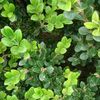
|
Boxwood, WintergemBotanical Name: Buxus microphylla 'Winter Gem'
Winter Gem Boxwood is a popular evergreen shrub admired for its versatility in landscaping. It is celebrated for its dense foliage and compact growth habit, making it an ideal choice for hedges, topiaries, and formal gardens. It is not preferred over the Japanese Boxwood trimming into various shapes and form as the foliage is not as dense. Still, it responds well to pruning, allowing for intricate detailing and maintaining its desired appearance. The foliage is a darker green color over the Japanese Boxwood, and has a slightly faster growth habit to couple its taller mature height. In addition to its aesthetic appeal, Winter Gem Boxwood boasts shallow root systems, making it suitable for planting near structures or in confined spaces such as urban gardens. However, this characteristic also requires careful attention to watering, as shallow roots are more susceptible to drying out. Mulching around the base of the plant helps retain moisture, regulates soil temperature, and suppresses weed growth, promoting overall health and vigor. Furthermore, mulching provides a protective layer for the roots, particularly beneficial during hot, dry summers commonly experienced in Texas regions. Winter Gem also exhibits higher freeze tolerance than Japanese, but only slightly. Native to East Asia, including Japan and China, Boxwood thrives in well-drained soils with a slightly acidic, fertile, loamy soils enriched with organic matter. Adequate drainage is essential to prevent waterlogging, which can lead to root rot. Winter Gem Boxwood in partial shade to full sun exposure ensures optimal growth and foliage density, though it can tolerate some shade. [ More Info ]
|
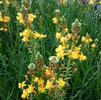
|
BulbineBotanical Name: Bulbine frutescens
Bulbine is a low-growing, clumping perennial admired for its resilience and striking appearance in the landscape. Originating from South Africa, this plant features long, slender, fleshy leaves that resemble those of aloe and clusters of star-shaped flowers in shades of yellow or orange. It thrives in Texas landscapes due to its ability to withstand heat, drought, and a variety of soil types, making it a perfect choice for low-maintenance gardens and xeriscaping. This hardy perennial prefers full sun but can tolerate light shade, especially in the hotter regions of Texas. It performs well in neutral to alkaline soils and thrives in well-drained conditions, as it is susceptible to root rot in overly wet soils. Bulbine is a non-toxic plant and is often used as a medicinal herb for minor skin irritations, earning it the nickname "burn jelly plant." Additionally, deer and other wildlife tend to avoid it, making it a practical choice for gardens prone to grazing. Bulbine typically grows to a height of 12 to 18 inches with a spread of 18 to 24 inches. When planting for a cohesive groundcover or border, space plants about 12 to 18 inches apart. Its blooms appear in cycles from spring through fall, with the heaviest flowering occurring in the spring. The flowers attract bees, butterflies, and other pollinators, adding ecological value to the landscape. However, as Bulbine grows, its upward stems may flop over, as they lack the rigidity to remain upright, which is an expected characteristic of the plant. In winter, Bulbine may experience dieback in freezing temperatures, particularly in areas where hard freezes are common. To encourage healthy regrowth in spring, be sure to mulch before hand, then prune back any frost-damaged foliage once the danger of frost has passed. In frost-free areas, it can remain evergreen year-round with occasional maintenance pruning. [ More Info ]
|
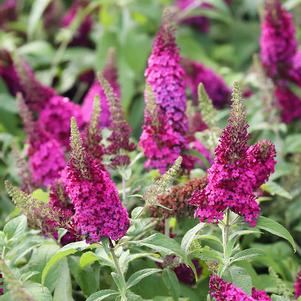
|
Butterfly Bush 'Chrysalis Cranberry'Botanical Name: Buddelia hybrid 'Chrysalis Cranberry'
Buddleia Chrysalis™ Cranberry is a compact butterfly bush cultivar patented and trademarked. It is known for its vibrant, deep cranberry-magenta flowers and extended blooming period. From late spring through late summer, this variety produces abundant, fragrant 5 to 6-inch-long flower spikes that attract butterflies, hummingbirds, and other pollinators, making it an excellent addition to pollinator-friendly gardens. Reaching a mature height of 20 to 28 inches and a spread of 18 to 24 inches, Chrysalis™ Cranberry is well-suited for small garden spaces, borders, and container plantings. It thrives in full sun and well-drained soil, exhibiting high drought tolerance once established. This variety is root hardy to USDA Zone 5 and stem hardy in warmer regions. Additionally, it is deer-resistant and tolerant of rain, ensuring reliable performance in various conditions. Notably, Chrysalis™ Cranberry is part of the Chrysalis™ series, bred for continuous blooming and a dense, upright habit. Its compact size and prolific flowering make it a standout choice for gardeners seeking vibrant color and ecological value without occupying significant space. [ More Info ]
|
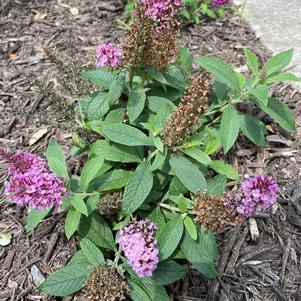
|
Butterfly Bush 'Chrysalis Pink'Botanical Name: Buddelia hybrid 'Chrysalis Pink'
Buddleia, commonly known as butterfly bush, is a genus of flowering plants that are known for attracting butterflies and other pollinators with their fragrant and colorful flowers. Buddleia plants are often grown for their ornamental value in gardens and landscaping. They are relatively easy to grow and can adapt to a wide range of soil conditions. Buddleias prefer full sun and well-drained soil. Chrysalis Pink is a trademarked plant that will stay in a compact form, avoiding that open weedy habit of a normal Buddleia. [ More Info ]
|
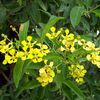
|
Butterfly VineBotanical Name: Mascagnia macroptera
Butterfly Vine is a fast-growing, semi-evergreen vine known for its delicate yellow flowers and unique seed pods that resemble butterflies. Native to Mexico and Central America, this vine thrives in Texas landscapes, offering season-long color and minimal maintenance. It works well on fences, trellises, and arbors, quickly covering structures with its twining, woody stems. This vine prefers full sun to partial shade and is highly heat and drought tolerant once established. It grows well in well-draining, alkaline to neutral soils but can adapt to slightly acidic conditions. While deer tend to avoid it, Butterfly Vine is not toxic to pets or humans, making it a safe choice for residential landscapes. Butterfly Vine can reach a mature length of 10-15 feet, with a spread of about 6-10 feet. For best growth, space plants 4-6 feet apart when planting along a structure or fence line. While it remains evergreen in warmer regions, it may lose some foliage in colder winters. In USDA Zones 8-11, Butterfly Vine remains semi-evergreen but may experience winter dieback in colder areas. Applying mulch around the base can help insulate the roots. In regions with frequent hard freezes, it may require protection or replanting as a tender perennial. [ More Info ]
|
